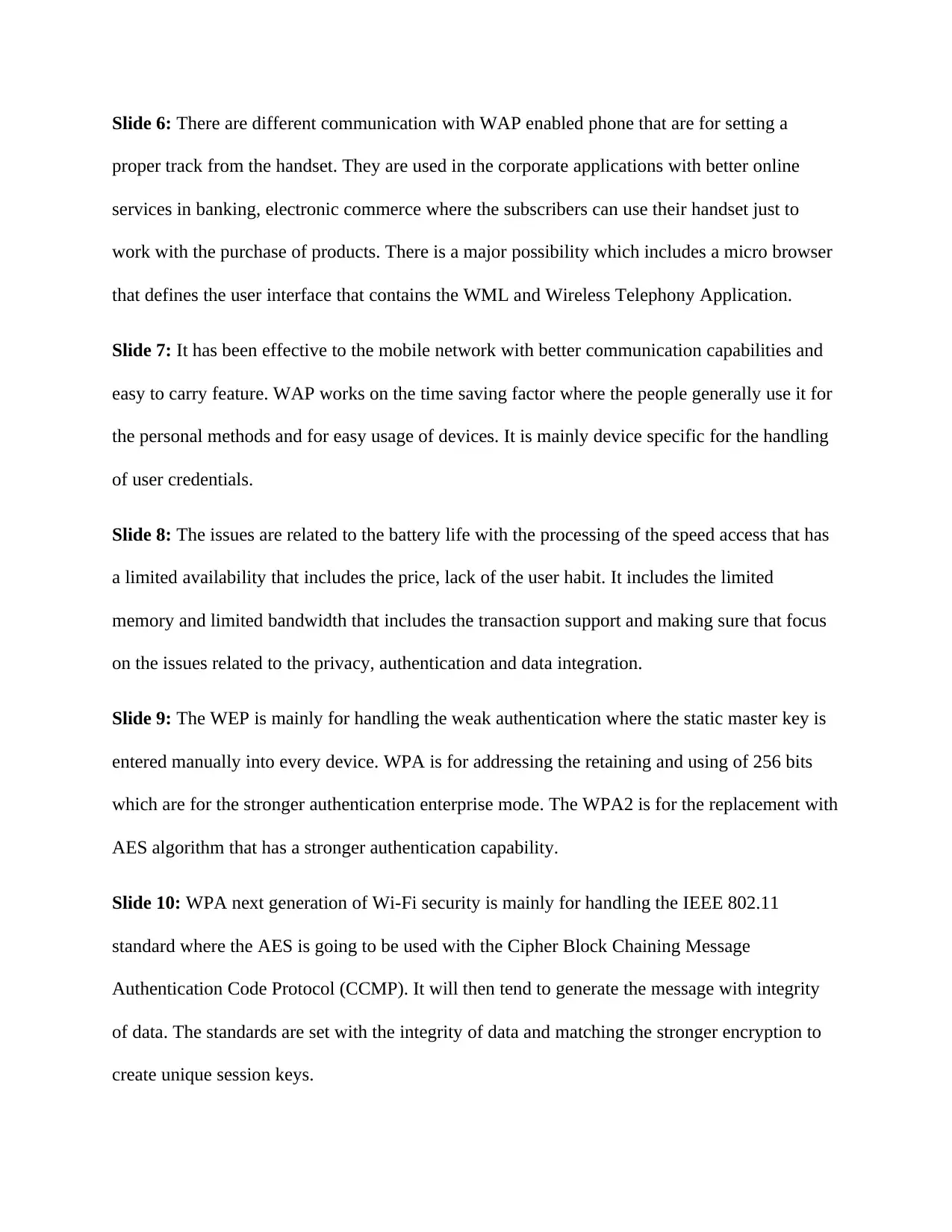Analysis of WPA Protocols: Securing Wireless Computer Networks
VerifiedAdded on 2023/06/15
|3
|693
|256
Presentation
AI Summary
This presentation provides an overview of Wireless Protected Access (WPA) protocols and their role in securing wireless computer networks. It begins by highlighting WPA's security certifications and its effectiveness in handling stronger encryption through technologies like Temporal Key Integrity Protocol (TKIP) and Advanced Encryption Standards (AES). The presentation contrasts WPA with Wired Equivalent Privacy (WEP), emphasizing WPA's built-in authentication support. It discusses WPA's authentication and encryption features, its reliance on RADIUS for secure connections, and its ability to support pre-WPA devices. The presentation also covers WPA's operational mechanisms, including computer authentication, central authentication servers, and its application in both home and enterprise networks. It addresses the use of WPA in SOHO environments, detailing password-based network establishment and encrypted data exchange. Further, the presentation explores the use of Wireless Application Protocol (WAP) in mobile networks, its applications in corporate services and e-commerce, and its device-specific handling of user credentials. The presentation also considers the limitations and issues associated with WAP, such as battery life, processing speed, limited availability, and concerns regarding privacy and data integration. Finally, the presentation compares WPA with WEP and WPA2, highlighting the improvements in authentication and encryption. It also discusses the next generation of Wi-Fi security, focusing on the IEEE 802.11 standard and the use of AES with CCMP for data integrity.
1 out of 3










![[object Object]](/_next/static/media/star-bottom.7253800d.svg)